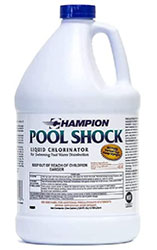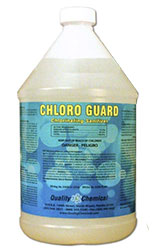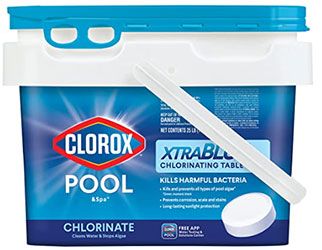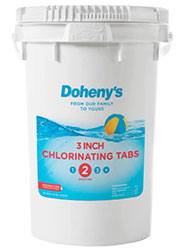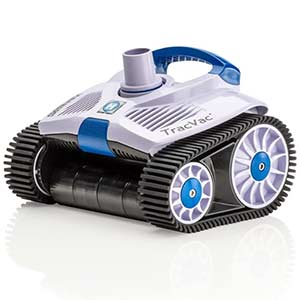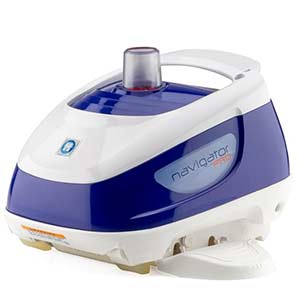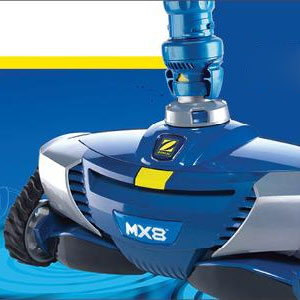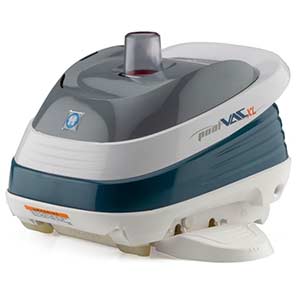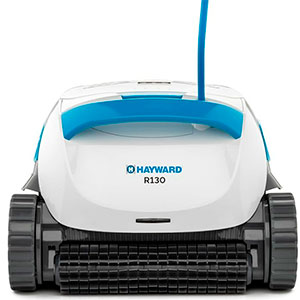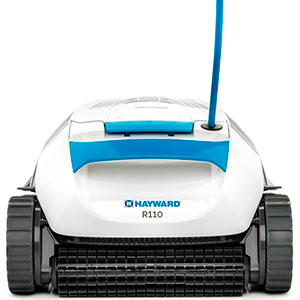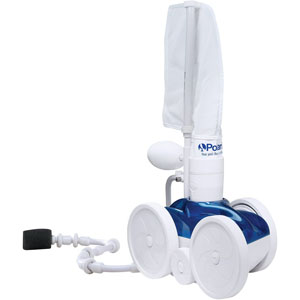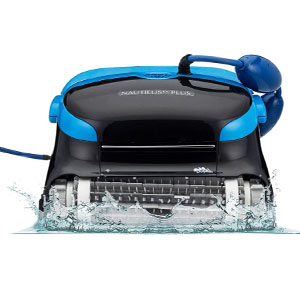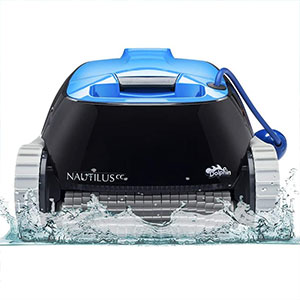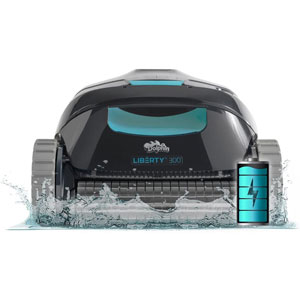Liquid vs. tablet chlorine – Comparison review
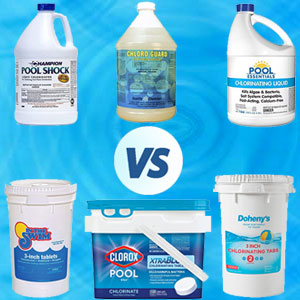
You can find numerous articles about pool pumps and robotic cleaners, but the question of proper chemical treatment is undeservingly left behind.
Chemicals should be added to prevent algae, viruses, microorganisms, and other bacteria from growing. The process of chemical addition should be under control, and water composition should be adequately tested. In this article, we will compare liquid vs. tablet chlorine as one way of chemical treatment.
What is a pool chemical treatment?
There are many videos of “pool shock” and the addition of chemicals to the pool’s water. It also can be about adding powerful chemicals (chlorine or another oxidizer) to green and cloudy swimming pool water. This procedure removes all contaminants, algae, and bacteria and is part of a regular water contamination program. The shock process is especially recommended at the beginning of pool season or after heavy usage by many people. Some service companies recommend using chemicals weekly. On the market, you can find different shocks that should be chosen based on your pool type, problems, frequency, and product form.
Some professionals call shock only liquid chlorine, and there are four types of these shocks:
- calcium hypochlorite,
- sodium dichlor,
- potassium monopersulfate (non-chlorine shock),
- sodium hypochlorite.
In addition to chlorine in shock form, it could be tablets in Trichloro-S-Triazinetrione (Trichlor) form.
Non-chlorine shocks are milder and recommended for weekly usage, but they actually do not kill contaminants. Calcium and sodium hypochlorite and Trichlor shocks are the most powerful shocks with the highest available chlorine concentration for algae elimination and problematic water. Dichlor shock contains less chlorine but is still suitable for algae treatment. Chlorine can be introduced into the water as tablets, powder, granular, solution, or salt chlorine generators working from regular table salt. Disinfection also can be performed by bromine, ultraviolet radiation, or ozone, but chlorine is the cheapest and the most powerful method.
To keep the pool clean and make it healthy for people, chlorine is the best pool shock. It reacts with urine, sweat, body lotions, and other compositions and cleanses the water. Chlorine reacts with all these components, and chloramines are created. You must add chlorine without people in the water, use gloves and protect your eyes. After adding chlorine shock, the filtration should work for 8-24 hours, and you need to fix the pH level to the normally required level of 7.4-7.6 with special solutions.
Liquid vs. Tablet chlorine – Main Differences
We will focus on two popular chlorine forms – tablets and solutions. Both forms have the same active component – chlorine, but in different forms. Chlorine in tablet form comes in a solid form that dissolves in the pool water; it is in liquid form. Chlorine is not a chemical term meaning gaseous form; it is a generic term for the active component of pool sanitizer. Chlorine in tablets and a solution is hypochlorous acid. The main differences between the two forms are:
- Liquid chlorine is unstabilized and costs cheaper.
- One gallon of liquid chlorine equals two chlorinating tablets.
- The tablet should be added into a skimmer, feeder, or floater, and liquid should be added directly into the water.
- Liquid chlorine does not leave residue; pieces of tablets can fall on the floor and leave stains.
- Liquid chlorine immediately creates high chlor concentration, like a shock for your pool; tablets dissolve slowly, creating constant chlorine levels.
Why liquid chlorine?
No matter which form chlorine is located, it sanitizes the pool from all unpleasant substances equally well. However, liquid chlorine has a special smell; after a reaction with urine and other amine-contained components in your pool, chloramines are formed with a strong odor. If the odor is too strong, add more liquid chlorine.
Shortly, the pros and cons of liquid chlorine are:
- Cost-effective
- Do not need to dissolve in water; the liquid chlorine is ready to use
- Easy to use, just pour into the water near the pump discharge
- Kill all microorganisms, including algae
- Clean from all human organics and cosmetics
- Clean cloudy pool
- The unstabilized form needs to pair with pH down solution
- Solution with calcium hypochlorite should be avoided for saltwater pools
- Highly corrosive solution
- Water balance is required before and after the addition
- Short storage life (one year)
- Special storage conditions without direct sunlight
- Not suitable for vinyl pools
Liquid chlorine can contain calcium hypochlorite or potassium hypochlorite in any concentration between 10-14%. That means the solution contains 96-98% of water. These disinfection bottles can be called shocks, bleach, or simply liquid chlorine. This solution is hazardous because of the high chlorine concentration and can’t be used for other household needs (1.5-6% chlorine is used there). The quantity of disinfection solution should be calculated as 12.5 ppm per 10.000 water gallons in the swimming pool. Liquid chlorine is an inorganic disinfectant without cyanuric acid. The solution is non-flammable and non-explosive.
All hypochlorites are an unstabilized form of chlorine, which is destroyed by sunlight. Therefore, you need to use this type of chlorine shock at night. For stabilization, some manufacturers recommend pairing with pH-down solutions. Because of calcium, calcium hypochlorite is not recommended for saltwater pools with generators, as calcium can build up inside. These solutions can also destroy vinyl above-ground pools (like Intex), so please read the pool manual carefully. Sodium hypochlorite is much better than calcium. It dissolves better in most pools and can be used in all pools, including plaster, vinyl, painted, and saltwater. Fortunately, calcium hypochlorite is more frequent in powder form, so in the bottle is mainly sodium (potassium) hypochlorite.
Liquid chlorine has a pH of 13, so you must balance the water 7.2-7.4 after disinfection. To insert the solution into the water, quickly empty the bottle near the pump discharge and let the water with chlorine circulate. No additional mixture with water is required. You need to follow the instructions on the bottle and exceed recommended quantities, as liquid chlorine is highly corrosive. Liquid chlorine kills all unnecessary microorganisms in your pool and makes cloudy water clean.
You need to store the bottles with liquid chlorine in dry and cool places without sunlight. Unfortunately, with time sodium hypochlorite converts into non-active sodium chloride. To use the solution in the whole strength, the storage life should not exceed 360 days. The empty bottle should be diluted with large quantities of water into a sanitary sewage system before disposal. Some liquid chlorine bottles are refillable; please check the instructions on the package.
Liquid Chlorine – Comparison Table
In this article, we will review three manufacturers of liquid chlorine. All three solutions are sold in packages for four-gallon bottles. The table is presented with a short comparison of the three most recommended liquid chlorines, more detailed information you may read after.
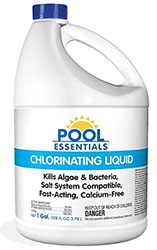
Smart Case of 4 Gallons is another chlorinating liquid to kill algae and bacteria. It is compatible with salt generators. It works fast and also does not contain calcium; chlorine is in 10% sodium hypochlorite form. You may use it in your household for disinfection and sterilization in small quantities.
With 1 gallon of Smart Case to 10.000 gallons of water, it should be used for a swimming pool. This shock dissolves in water within seconds; you need not add a stabilizer. If you have a non-standard pool size, you may use a special Pooli app to calculate the shock quantity.
It’s 60-80% more cost-effective than granular chlorine. In case of any problems with the product, the seller is ready to make a refund quickly.
In conclusion, we must admit that all three chlorine shocks have almost the same effect, containing sodium hypochlorite. Our recommendation is to choose based on the price.
Why tablet chlorine?
Chlorine tablets work the same way as liquid chlorine. You need to place the tablet into a skimmer, a feeder, or a floater. It will be automatically dissolved in the water and works as any other liquid type of chlorine chock. Tablets contain cyanuric acid, so you should ensure they do not touch the floor or walls. Otherwise, they will leave stains. It is an effective sanitization tool. Almost all tablets are produced from 99% Trichloro-S-Triazinetrione, which produces 90% available chlorine in the water. If the composition is different, ensure that this manufacturer is reliable and that there are any chlor substances inside. The tablets are sun stabilized, but the bucket with tablets should be stored in a dry place.
As the tablets are stored in a plastic bucket, and you will not use all tablets for one treatment procedure, the rest should be stored without children’s access. For that, the cover should have a safety latch. The tablets can come in two forms – wrapped or unwrapped. Wrapped tablets in individual packing are better and safer in storage. Even though you work with tablets, you need to wear gloves. 3-inch tablets perfectly fit all floaters and feeders ideally, dissolve slowly, and protect your pool longer than any other type of sanitation.
Some manufacturers suggest directly into a skimmer basket, but if you stop your pump, a large quantity of cyanuric acid dissolved in the water will go to your pump and filter. This may cause staining and corrosion of the pool equipment. If you add tablets to your skimmer, ensure the pump is working. As the tablet dissolves for several hours, the cyanuric acid level in the water will slowly rise. So, you need time to check the pH with the strips, and if required, add stabilizers or liquid chlorine to make the water safe for swimming.
The quantity of chlorine released for sanitization in your swimming pool depends on many factors – the water composition (pH, alkalinity, calcium), the temperature, the run time of your pump, and the number of tablets you put into the floater or the feeder. You can check the effectiveness only with test strips. If your chlorine level exceeds three ppm, you can reduce the number of tablets. The number of tablets should be higher for frequent use and a high level of filtration. The tablets dissolve slowly, and each day, add a dose for sanitation to your pool. Approximately one 3-inch tablet is for 5000 gallons of water and should be replaced after 5-7 days. Each tablet adds about 5.5 ppm of chlorine into the water.
- By slowly dissolving protects the pool longer
- Individual wrapping ensures the long storage life of tablets
- Perfect size for floaters, skimmers, feeders
- Do not require a preliminary mixture with water
- Sun-stabilized form of chlorine shock
- Effectively kill bacteria, algae, and other microorganisms in your pool
- Long-lasting protection of your swimming pool from microorganisms (5-7 days)
- The storage place should be without children’s access
- Water test results can calculate the required quantity for sanitation
- Contact of tablets with walls or surfaces can cause stains
- As tablets dissolve slowly, you need every time before swimming check the chlorine level
Tablet Chlorine – Comparison Table
We will compare three liquid chlorine products with three tablet chlorine products. All three tablet packages are sold in buckets of different sizes. The shorter information is presented in the table, the more detailed you can read afterward.

In The Swim 3 Inch Stabilized Chlorine Tablets are one of the most popular tablets among American pool, spa, and hot tub owners. They easily keep your pool clean and healthy for swimming. These tablets have long dissolving formulas like Clorox tablets so that you can use one for long and cost-effective water treatment. The tablets are made from 99% Trichlor.
Tablets help to keep a constant level of chlorine, which liquid chlorine can’t propose. In the Swim, tablets have individual wrapping in easy-open plastic bags, which is more convenient for storage. The bucket has a red safety button to prevent kids from opening it.
The recommendation for use is 1-2 tablets for every 10.000 gallons of water, but regular chlorine level testing is still mandatory. The number of tablets should be increased in case of heavy rains or warm temperatures.
In conclusion, we can recommend all three tablets. They are all very effective in algae and bacteria removal. But In The Swim and Doheny’s, packing is more convenient and safe – individual wrapping and safety lockage of the bucket cover. On the question – is liquid chlorine better than tablets – we can definitely answer no. It works differently, but tablets are the same effect in the long run.
Chlorine sanitation guidance
Chemical treatment is a dangerous process. You need to store chemicals in a cool, dry area without direct sunlight and heat. During work with chlorine, your eyes should be protected with glasses and your arms with gloves. In case of a spill, you need to water the affected part of the skin and see your doctor afterward.
- Before adding any chemicals to your swimming pool, you must determine all problems and the right shock for you and its form. The pool volume should also determine the type of chlorine. For example, not all shocks can kill algae spores, and shocks with calcium are unsuitable for saltwater pools.
- Balance your water level before adding shock. You need to check pH, calcium hardness, and CYA levels. With proper water composition, the chlorine will work efficiently. Chlorine is effective the most, with pH 7.2-7.6. Use test strips.
- Add the chlorine to the water. Remember to wear gloves and glasses (personal protective equipment). Liquid chlorine should be added to the water without a preliminary mixture with water. The tablets should be added to a floater, skimmer, or chlorinator. The pump should work a whole day while chlorine works in your pool.
- Test the water at the end of the filtration cycle. Use the same test strips as in point 2. The values should be pH – 7.2-7.8, 200-400 ppm calcium hardness, and free chlorine – 1-3 ppm. If the pH is less than 7.0, the water can cause skin or eye irritation and pipe corrosion.
- If you use liquid chlorine, you can swim for at least 8 hours after adding chlorine if your test strips show suitable water composition. As tablet chlorine maintains the constant chlorine level, which you control with test strips within safe limits, you may swim immediately after pulling new tablets into the water. This is the main difference between liquid vs. tablet chlorine.
- Chlorine kills only algae, bacteria, and other contaminants, but you still should use other equipment on time. Skimmers and filters are required to collect debris, and pool cleaners or brushes are required to clean walls and floors of dirt.
Conclusion
Chlorine stated on the shock or sanitized substances is not the same. It can have different chemical compositions and be in different forms or purity. It could be granular, tablet, or liquid. The most efficient forms are Sodium hypochlorite and Trichlor in high concentration (99%), which is why they are called professional or commercial grade. The liquid chlorine is suitable for one-time treatment in a week (shock care), while a tablet creates a constant chlorine level of 1-3 ppm. But tablets and liquid chlorine described in this article are equally good at killing algae, bacteria, and other microorganisms. You should choose based on the storage convenience, frequency of application, and price. We can’t state that liquid chlorine is better than tablets; everything depends on your preference.





